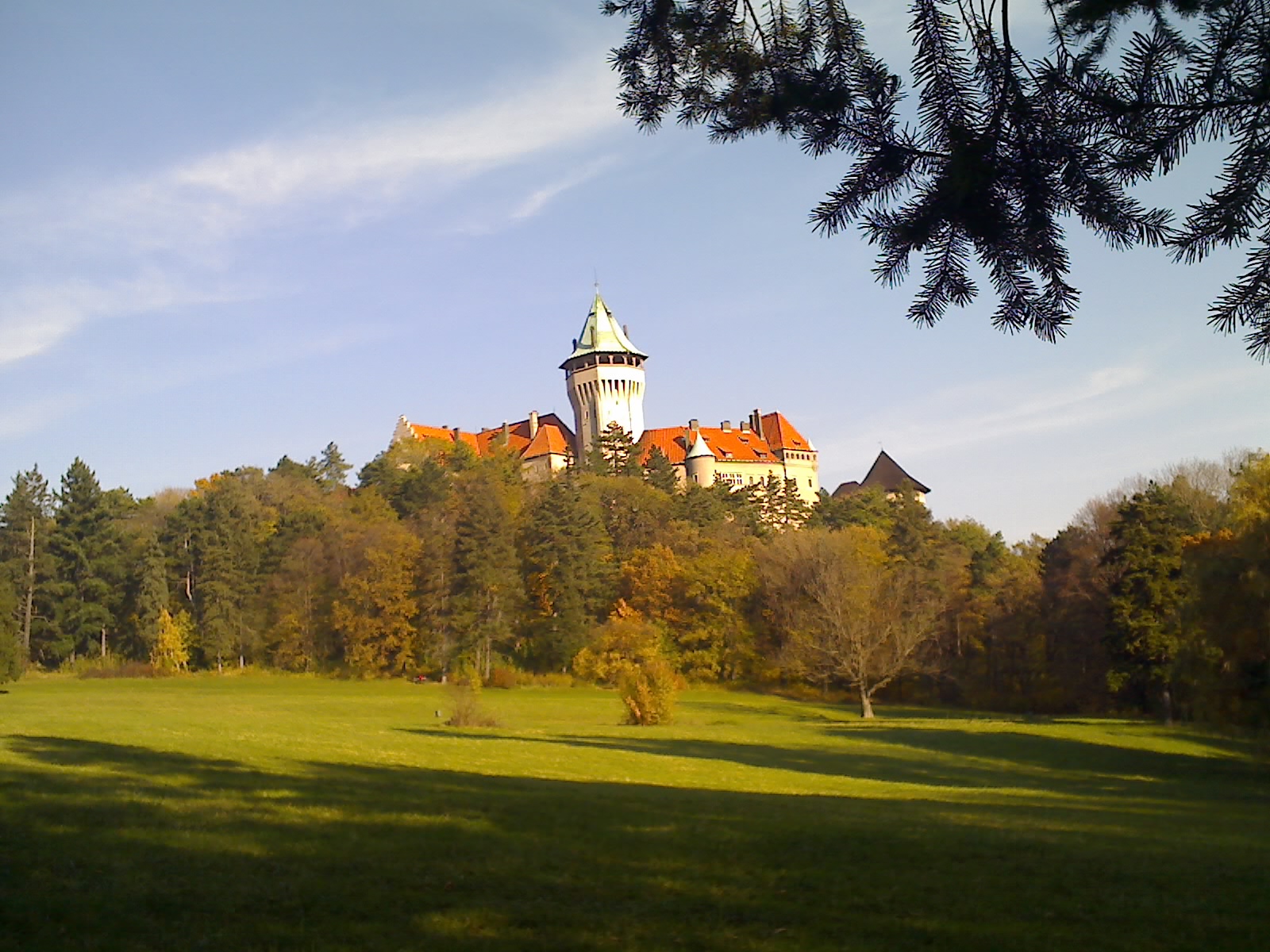LINDI 2012
4th IEEE International Symposium on
Logistics and Industrial Informatics
LINDI 2012
Organizers
Óbuda University, Budapest, Hungary
Slovakian Academy of Sciences
Technical University of Kosice, Slovakia
Elfa s.r.o
Sponsors
IEEE Hungary Section
IEEE SMC Chapter, Hungary
Technical Sponsors
IEEE Systems, Man, and Cybernetics Society
IEEE Industrial Electronics Society
Hungarian Fuzzy Association
Venue
Smolenice Castle of Slovakian Academy of Sciences

Authors' Schedule
Full paper submission:
May 31, 2012
Notification:
June 30, 2012
Final paper submission:
August 1, 2012
Next Events
SISY 2012
ICETA 2012
CINTI 2012
CogInfoCom 2012
SAMI 2013
SACI 2013
ICSSE 2013
INES 2013
Smolenice
Smolenice is a village and municipality of Trnava District in the Trnava Region of Slovakia, on the foothills of the Little Carpathians. It is 60 km northeast of Bratislava and 25 km northwest of Trnava.
Smolenice Castle
Smolenice Castle was built above the village in the 14th Century, as a part of chain of the castle protecting passes in the Little Carpathians. The castle with the village was royal at first, but it kept changing its hands for several centuries, until the Pálffys took it in the 18th Century, when the castle was in decay. During the Napoleonic Wars, it burned down, and only outer fortifications remained. In the 20th Century, reconstruction of the Smolenice castle ruins began, and was reconstructed as a château. Reconstruction finished after the Second World War.
History
In the 15th Century the importance of Smolenice increased considerably, because a castle was built there which became the centre and seat of the Smolenice estate. Early in the 16th Century, Smolenice had been gained by the Orszagh family. In 1777, Jan Palffy takes the Smolenice estate as pawn. The Palffy family did not live at the castle, which had decayed considerably during the life of Kristof III, the last of the Erdody family - they lacked money for maintenance. The decay was complete during the Napoleon Wars - the main castle building and the tower had burnt down.
Construction of the Smolenice Castle of today had been started early in the 20th Century by Jozef Palffy Jr., the landlord of Smolenice and Dobra Voda estates. First work on the fortification walls started in 1887 already on the bastions. Bastions from the old castle were preserved, with height extension and new roofing. The Count Palffy had built the castle at his own expense according to design by the architect Jozef Hubert. During World War 1, the construction was interrupted; provisional adaptation of some rooms was made and archives of the Palffy family was located there. The construction was not resumed before the end of World War 2. In 1945 the Castle became the property of the State; it was taken over by the Slovak National Council who decided to have their summer-house there. The castle was finished and furbished and handed over to the Slovak Academy of Sciences on 26 June 1953 to become a representative place for meetings of scientists from worldwide.
Travel Information
If you plan to travel by plain to Vienna, there are Eurolines buses (almost every hour) right from the Vienna airport to the Bratislava Central Bus Station (Bratislava AS, Mlynské Nivy). You can check the time tables at http://listky.emtest.sk (Please note, that the countries are stated in Slovak although you click English. A short vocabulary: Slovakia=Slovenská republika, Austria=Rakúsko, Hungary=Madarsko, Germany=Nemecko.)
The best way to get to Smolenice (Castle) from Bratislava (Central Bus Station, Mlynské Nivy - in Slovak stated as Bratislava,AS MHD) is by bus.
If you will travel to Bratislava (Central Railway Station) by train, you can take the trolley-bus No. 210 to get to the Bratislava Central Bus Station (Mlynské Nivy). You should buy a 30 min ticket for 18 SKK in advance in a kiosk.
If you plan to travel by car, please note, that it is possible to park right on the patio of the Smolenice Castle. In this case you can ignore the trafic sign "DO NOT ENTER" and drive right up to the Smolenice Castle.

Individual Program
1. Trip to Cervený Kamen Castle
Cervený Kamen Castle is originally a royal castle in the Small Carpathian Mountains; it is documented in writing as early as in the middle of the 13th Century. In the 16th Century its owners, the Fugger family, rebuilt the castle to a mighty fortress with a new fortification system. This fortification system belonged to the very cutting edge of military technology of that age. The exhibition contains rich collections of historical furniture and a picture gallery.
2. Trip to Driny Cave
Driny Cave is the only show cave in the western Slovakia. It is located in the Smolenice karst in the Small Carpathian Mountains, to the southwest of Smolenice. The mysterious hole in the earth was known for the local people already in the 19th Century, but only in 1932 they dared to enter underground. Flowstone draperies with indented facing are typical for this cave.